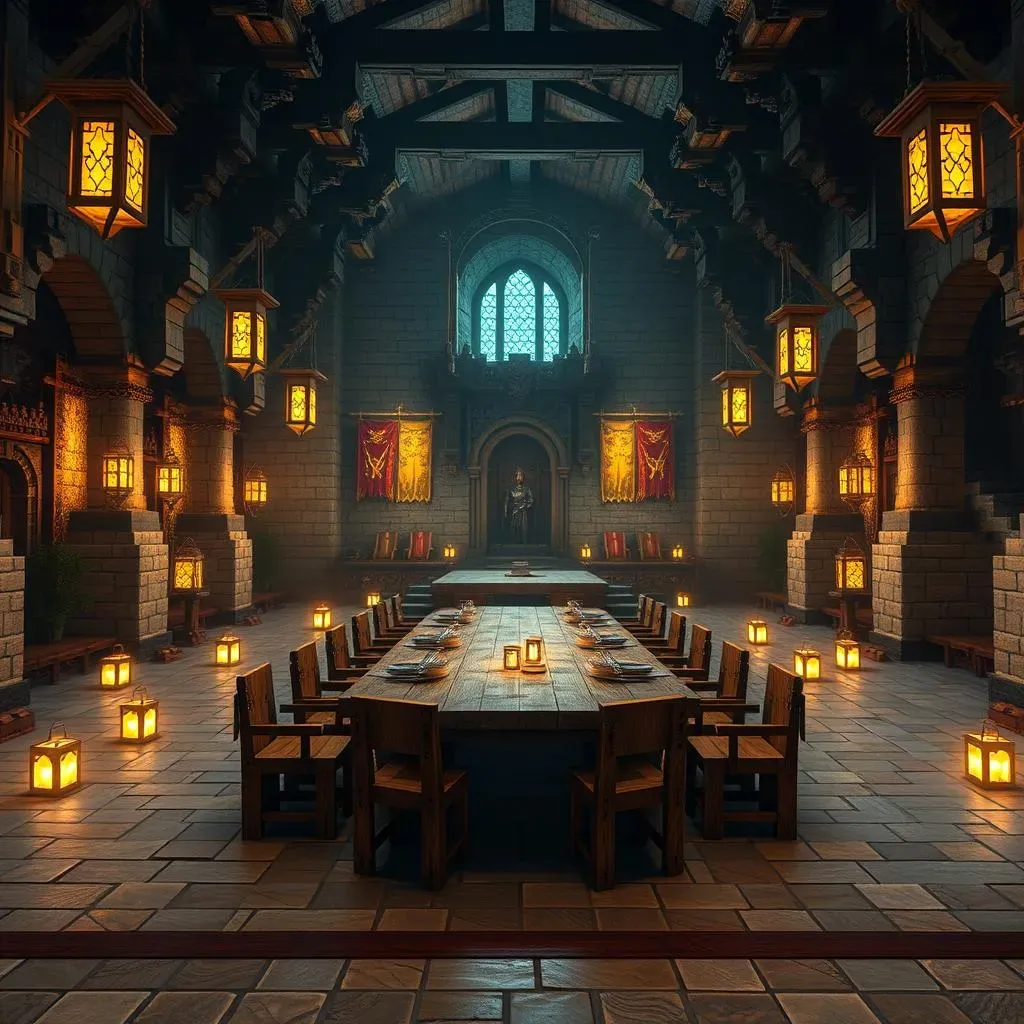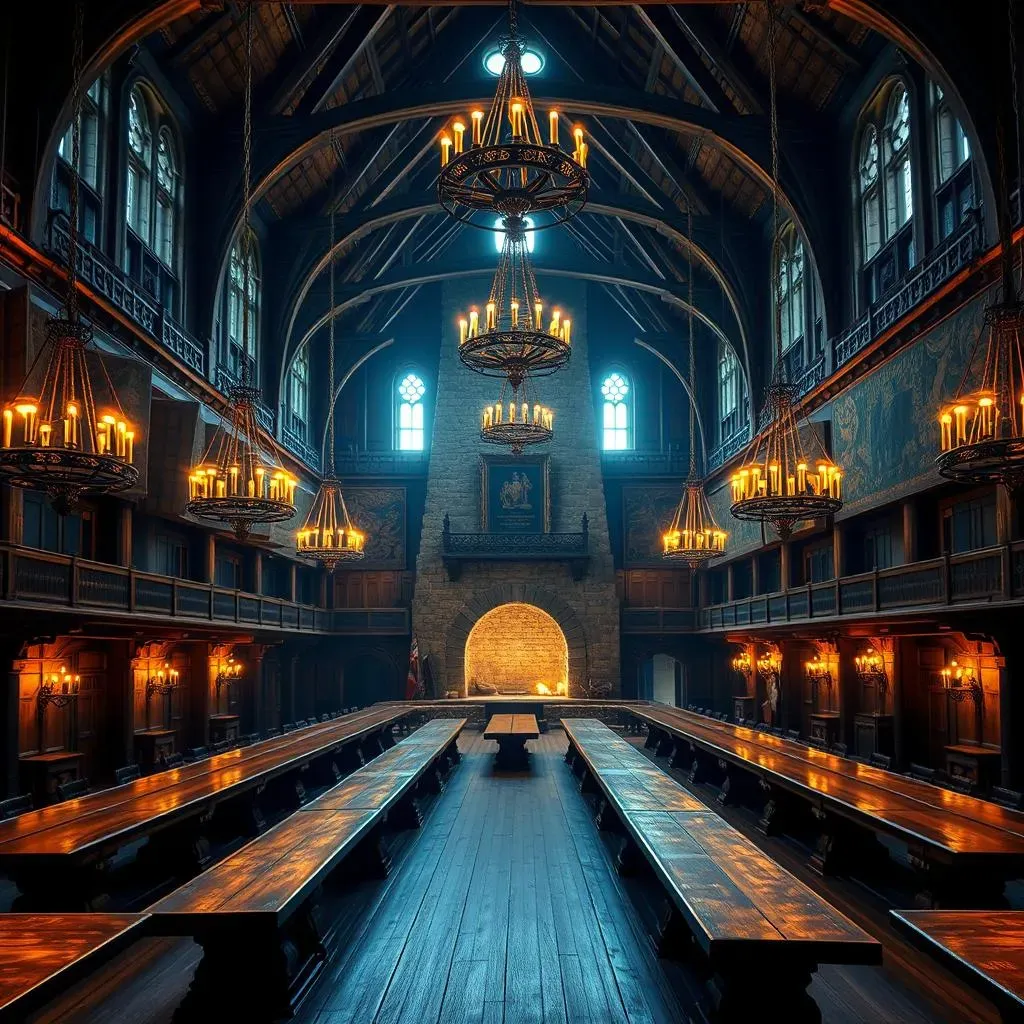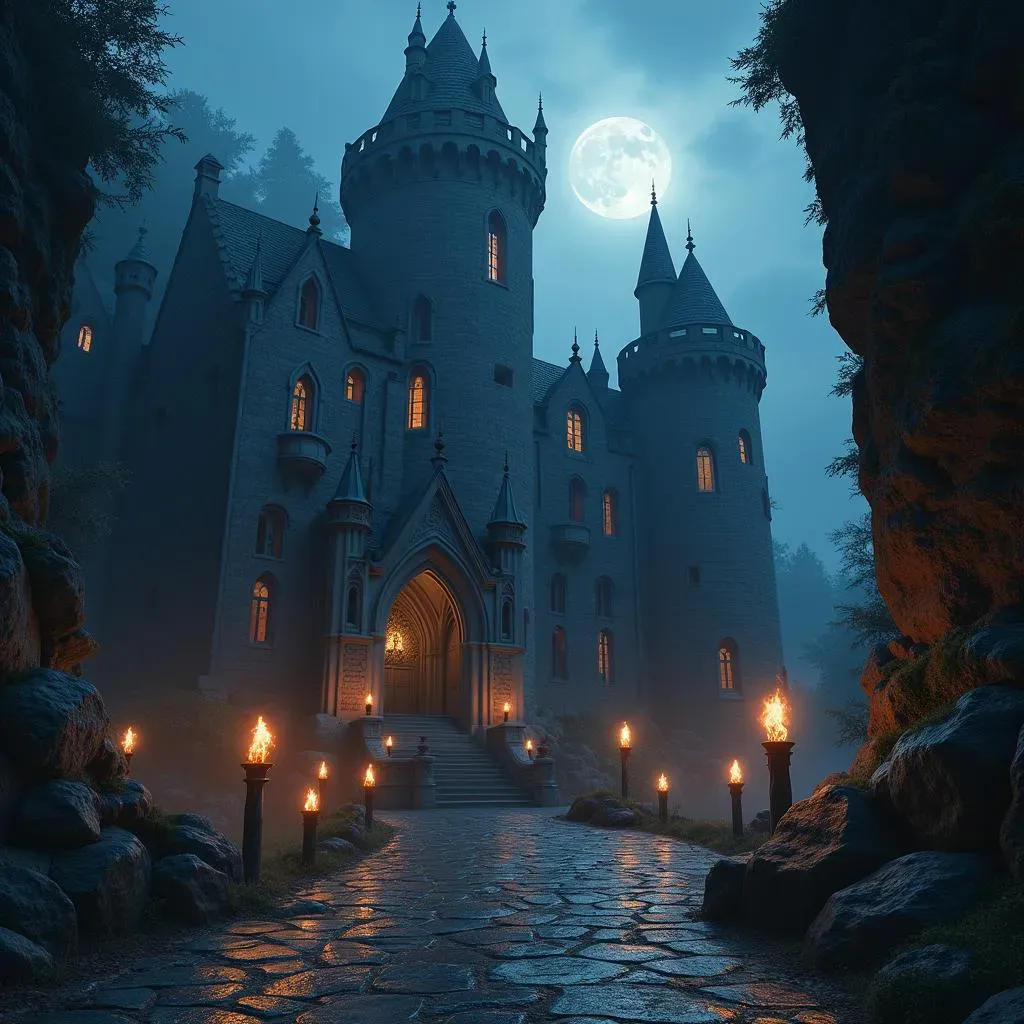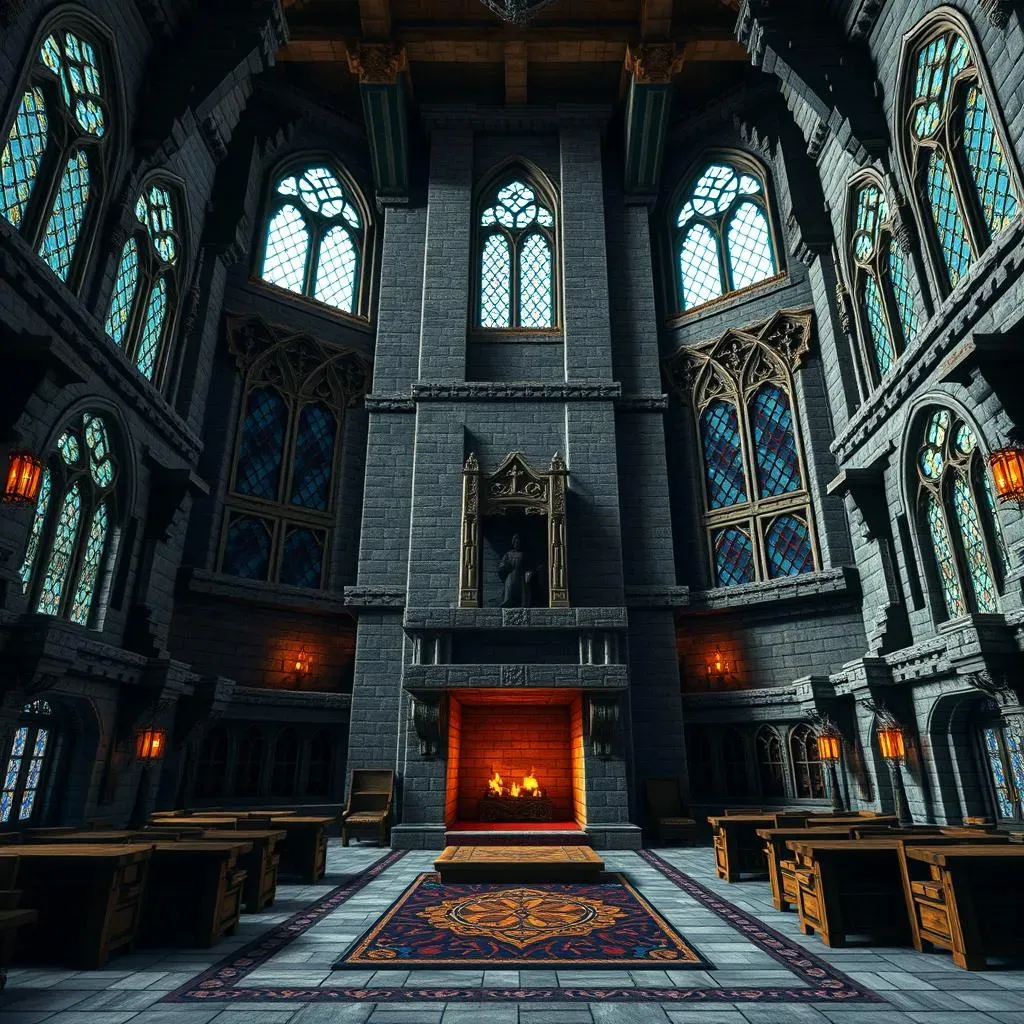Table of Contents
Ever dreamed of building the ultimate medieval castle in Minecraft, but felt lost when it came to the interior? Don't worry, you're not alone! Creating stunning and believable medieval minecraft castle interior design can seem daunting, but with the right plan and a little creativity, you can transform your blocky fortress into a truly magnificent realm. This article is your guide to designing epic castle interiors, taking you from initial planning to advanced building techniques. We'll explore everything from choosing the right furniture and decorations to crafting unique rooms like a grand throne room or a secret library. Prepare to learn how to build key rooms, incorporate realistic lighting, and even add hidden passages and secret chambers to elevate your castle to legendary status. Get ready to unlock your inner architect and bring your Minecraft castle to life with breathtaking detail and immersive atmosphere. Let's dive into the world of medieval minecraft castle interior design!
Planning Your Minecraft Castle Interior: From Throne Room to Dungeon

Planning Your Minecraft Castle Interior: From Throne Room to Dungeon
Laying the Foundation: Size and Structure
Before you even think about fancy tapestries and thrones, you need a solid plan. Think of your castle's interior like a giant LEGO creation—you wouldn't start sticking pieces together randomly, would you? Start by determining the overall size of your castle. A sprawling fortress needs a different approach than a cozy keep. Consider the number of rooms you want and how they'll connect. Will you have a central courtyard? Secret passages? A dungeon deep below? Sketch it out on paper first! It's much easier to rearrange rooms on paper than to demolish walls in Minecraft. Remember, a well-thought-out plan saves you headaches later. Once you have a basic floor plan, you can start thinking about the individual rooms and their functions.
Don't forget about the flow of your castle. You want players to easily navigate from one area to another. Think about how people would move through a real medieval castle. Would they enter through a grand gatehouse, then into a courtyard? Would they proceed to the great hall, then the bedrooms, and finally the dungeon? Consider adding hallways and staircases to create a natural path. You can even use different materials to visually separate different areas of your castle. For example, you might use cobblestone for the dungeon, wood for the residential areas, and polished stone for the throne room. Check out these large castle blueprints for some inspiration!
Room | Purpose | Size (blocks) |
|---|---|---|
Throne Room | Ruler's chamber | 20x20 |
Great Hall | Feasts and gatherings | 30x40 |
Dungeon | Prison | 15x15 |
Defining Your Rooms: Function and Style
Now comes the fun part: deciding what kind of rooms you'll have! A medieval castle isn't just about stone walls and towers—it's about the stories within. Think about the people who live (or are imprisoned!) in your castle. What do they need? A grand throne room for the king, of course! But what about a kitchen, a library, bedrooms for the guards, and maybe even a stable? Consider the function of each room. A throne room needs to feel regal, while a kitchen should feel functional. The style should match the function and the overall feel of your castle. Are you going for a dark and gothic castle, or something brighter and more cheerful? Think about the details: Will you have a massive fireplace in the great hall? A secret passage leading to the dungeon? The possibilities are endless!
Don't be afraid to get creative! Medieval castles weren't always uniform; they evolved over time, reflecting the tastes and needs of their inhabitants. You can incorporate different architectural styles, materials, and decorative elements to create a unique and memorable castle interior. Remember to consider the lighting in each room. Torches can create a dramatic effect, while lanterns provide a more subdued ambiance. Consider using different block types to create visual interest and depth. For example, you could use stained glass for windows, carpets for floors, and paintings on the walls. Need help getting started? Our step-by-step castle tutorial can guide you through the process!
- Throne Room: Opulent, spacious, decorated with banners and tapestries.
- Great Hall: Large, open space with a fireplace and long tables.
- Dungeon: Dark, damp, and claustrophobic, with cells for prisoners.
Crafting the Perfect Medieval Ambiance: Furniture, Decorations, and Lighting

Crafting the Perfect Medieval Ambiance: Furniture, Decorations, and Lighting
Furnishing Your Fortress: Creating Comfortable and Authentic Spaces
Now that your castle's structure is set, let's add the finishing touches! Think beyond just blocks; let's make it feel lived-in. Forget those generic Minecraft chests; it's time for some truly regal furniture. Imagine crafting sturdy wooden tables and chairs using oak or dark oak wood. For a touch of elegance, add some cushioned seats using wool blocks in rich colors like deep red or royal blue. For a truly authentic touch, try making your own custom furniture using slabs and stairs to create unique designs. A grand throne made of smooth stone, perhaps? Or a lavish bed for the king and queen?
Don't forget about storage! While chests are practical, you can create built-in shelves using bookshelves and stairs, making them look more integrated into the castle's design. You can even add decorative items like paintings and banners to personalize the spaces. Remember, the goal is to create a sense of history and authenticity. Check out these large castle blueprints for ideas on room layouts and furniture placement. A well-furnished room tells a story; it’s not just a collection of blocks.
Furniture | Materials | Placement |
|---|---|---|
Tables | Oak Wood | Great Hall, Dining Room |
Chairs | Oak Wood, Wool | Great Hall, Throne Room |
Throne | Stone, Gold | Throne Room |
Illuminating Your Castle: Light and Shadow for Atmosphere
Lighting is key to setting the mood in your medieval Minecraft castle. Forget those harsh torches; let's create a more atmospheric ambiance. Lanterns, hanging from the ceilings or placed strategically on walls, provide a softer, warmer glow. Consider using different light sources to create depth and contrast. For instance, you can use torches to highlight dark corners or passageways, creating a sense of mystery and intrigue. In the throne room, you might want to use brighter light sources, like glowstone, to create a sense of majesty and power. Use shadows to your advantage; they can add a sense of realism and depth to your castle.
Think about the time of day and the mood you want to create. For a grand hall, you might want bright, welcoming light. However, a dungeon should be dark and foreboding. You can achieve this by strategically placing light sources and using blocks that absorb light to create shadows. Experiment with different lighting techniques to create the desired effect. Remember, lighting is not just about illuminating your castle; it's about creating a specific feeling. Need some help? Our step-by-step tutorial shows different lighting techniques.
- Lanterns: Soft, warm light, ideal for hallways and bedrooms.
- Torches: Harsh light, good for highlighting details or creating shadows.
- Glowstone: Bright light, perfect for throne rooms or grand halls.
Decorating with Detail: Adding Personality and History
The final touch is adding those small details that truly bring your medieval Minecraft castle to life. Think about the history of your castle. What events have taken place within its walls? What stories do its rooms tell? You can use items like paintings, banners, and armor stands to add personality and tell a story. A banner depicting the royal crest in the throne room adds a touch of royalty; armor stands with suits of gleaming armor in the great hall suggest knights and warriors. Even seemingly small details, like strategically placed bookshelves or flower pots, can add a sense of life and realism.
Don't be afraid to experiment! Try using different block types and colors to create visual interest. You can use stained glass to create beautiful windows, carpets to add warmth to the floors, and paintings to add personality to the walls. Remember, the goal is to create a space that feels both lived-in and historically accurate. By paying attention to the details, you can transform your Minecraft castle into a truly immersive and memorable experience. The more effort you put into the details, the more rewarding the final product will be. And who knows? Maybe you'll inspire others to build their own amazing medieval castles.
Building Key Rooms: The Great Hall, Armory, Library, and More

Building Key Rooms: The Great Hall, Armory, Library, and More
Designing the Heart of Your Castle: The Great Hall
Let's talk about the Great Hall—the beating heart of any self-respecting medieval castle! This isn't just any room; it's where feasts are held, deals are struck, and stories are shared. Think BIG. A truly impressive Great Hall needs height, space, and a sense of grandeur. A high ceiling, perhaps achieved with a clever use of slabs and stairs, creates a sense of awe. A massive fireplace, crafted from cobblestone or stone bricks, is a must-have focal point. Consider adding a raised dais at one end for the lord or king's seat. Don't forget the long tables, crafted from wood blocks, stretching the length of the hall, ready for those epic medieval feasts!
Think about the details that bring it to life. Large, intricately designed chandeliers made from lanterns and iron bars will add some elegance. Tapestries woven into the walls using wool blocks will add color and personality. Strategically placed torches can highlight specific architectural features, creating a dramatic and inviting atmosphere. Remember to check out these large castle blueprints for inspiration on how to layout the space effectively. Your Great Hall should feel regal and welcoming, a place where guests feel comfortable and impressed.
- High ceiling (using slabs and stairs)
- Massive fireplace (cobblestone or stone bricks)
- Long tables (wood blocks)
- Raised dais for the ruler
- Intricate chandeliers (lanterns and iron bars)
- Wall tapestries (wool blocks)
Armories and Libraries: Specialized Spaces
Beyond the Great Hall, specialized rooms add depth and authenticity. An armory, for example, should feel like a place of power and preparedness. Think about lining the walls with racks of weapons – use item frames to display swords, axes, and bows. Perhaps add some suits of armor on stands, gleaming under the light of strategically placed torches. The overall feel should be one of organized might, ready for any threat. A library, on the other hand, should be a haven of knowledge and quiet contemplation. Line the walls with towering bookshelves filled with books (use bookshelves and item frames). Add a large reading table in the center, crafted from dark wood, with comfy chairs nearby. Consider adding a warm, inviting light source—perhaps lanterns—to create a cozy atmosphere. It should feel both inviting and scholarly.
Remember, even smaller rooms can add significant character. A kitchen with working ovens and tables for food preparation, a stable for horses, or even a small chapel will add a sense of realism and depth to your castle’s story. Don't be afraid to get creative with these spaces, ensuring they reflect the functions and the overall style of your castle. If you're struggling with design ideas, our step-by-step tutorial provides additional guidance and inspiration. The details matter; they're what transform a collection of blocks into a living, breathing castle.
Room | Key Features | Atmosphere |
|---|---|---|
Armory | Weapon racks, armor stands, torches | Powerful, organized |
Library | Bookshelves, reading table, lanterns | Quiet, scholarly |
Advanced Techniques: Hidden Passages, Secret Rooms, and Custom Builds

Advanced Techniques: Hidden Passages, Secret Rooms, and Custom Builds
Crafting Secret Passages: Sneaky Pathways and Hidden Doors
Let's elevate your castle's intrigue with secret passages! These aren't just fun additions; they add depth and mystery. A simple passage can be created using slabs and stairs to cleverly hide a doorway behind a bookshelf or a seemingly ordinary wall section. For a more advanced passage, consider building a hidden staircase leading down to the dungeon or a secret room. Remember to use the same materials as the surrounding walls and floors to seamlessly blend the passage into the castle’s architecture. Consider using pressure plates or levers to open and close the passage, adding an extra layer of secrecy and challenge.
The possibilities are endless! You could create a network of passages connecting different parts of the castle, allowing for strategic movement and escape routes. Imagine a secret passage leading from the throne room to a hidden escape tunnel outside the castle walls! Or perhaps a network of tunnels leading to a secret armory or treasure vault. Think about the story you want to tell with your secret passages. Are they for escape, defense, or perhaps something more sinister? For more inspiration on creative castle layouts, you might find these large castle blueprints helpful. A well-hidden passage adds an element of surprise and wonder to your castle.
- Use slabs and stairs to conceal doorways
- Create hidden staircases
- Employ pressure plates or levers for access
- Build networks of interconnected passages
Designing Secret Rooms: Hidden Chambers and Vaults
Secret rooms take hidden passages to the next level. These hidden chambers can be used for a variety of purposes, from secret armories and treasure vaults to hidden libraries and escape routes. A simple secret room can be built behind a false wall, accessed through a hidden doorway or pressure plate. For a more elaborate secret room, consider creating a complex puzzle or series of challenges that the player must solve to gain access. This adds an extra layer of intrigue and reward. Remember to camouflage the entrance to the room cleverly, ensuring it blends seamlessly with its surroundings. Think about the purpose of the secret room—what treasures or secrets does it hold?
Secret rooms can significantly enhance your castle's narrative. Imagine a hidden chamber filled with ancient artifacts, a secret library containing forbidden knowledge, or a hidden escape route leading to safety. The design and purpose of the secret room should reflect the overall style and theme of your castle. For example, a gothic castle might have a dark and mysterious secret room, while a more cheerful castle might have a hidden treasure vault or a cozy secret library. Don't be afraid to experiment with different designs and functionalities! Our step-by-step tutorial can help you understand the basics of building.
Secret Room Type | Access Method | Contents |
|---|---|---|
Treasure Vault | Hidden Door, Pressure Plate | Chests, Gold, Jewels |
Escape Route | Hidden Passage, Lever | Tunnel to outside |
Building Custom Structures: Beyond the Basics
Once you've mastered the basics, it's time to unleash your creativity! Experiment with different architectural styles, materials, and decorative elements to create truly unique and memorable spaces within your castle. Try incorporating elements from different historical periods or cultures to create a fusion style. For example, you could combine medieval European architecture with elements of Asian or African design to create something truly unique. Don't be afraid to break the rules and experiment with unusual shapes and forms. The more creative you are, the more impressive your castle will be.
Think outside the box! Instead of simply building rectangular rooms, try creating curved walls, vaulted ceilings, or even towers within your castle. Use different block types and textures to create visual interest and depth. Consider adding custom furniture, decorative elements, and even custom-built mechanisms to enhance the functionality and aesthetics of your castle. The possibilities are truly endless. Remember, the goal is to create a space that is both functional and visually stunning. A unique build can truly set your castle apart from the rest. Your imagination is the limit!
